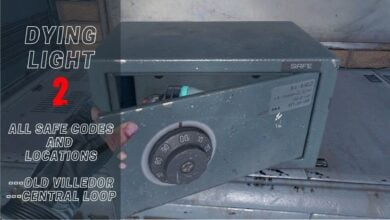As soon as the first trailer for Rollerdrome was released, everyone instantly started to refer to it as “that one game that looks like a Tony Hawk title, but with guns.” And while that description might seem extremely redundant to some players, it’s actually a pretty good summation if what you’re trying to do is get people interested. And it worked, at least it did for me and a lot of other potential fans.
Ever since it was revealed a bit over two months ago, Rollerdrome has been on my mind constantly. I have been thinking about it non-stop, and as reviews finally begin to roll out over the course of this week, I already know what the general consensus is going to be. Because I have also been playing it, and I’m telling you now that this is seriously a game-of-the-year contender for me.
So without further ago, let’s start off with our review of one of the best games to come out this year.
- Developer: Roll7
- Publisher: Private Division
- Release Date: August 16, 2022
- Platforms: PlayStation, PC
- Tested On: GTX 1060 6GB
- Predecessor: NONE
Story And Setting
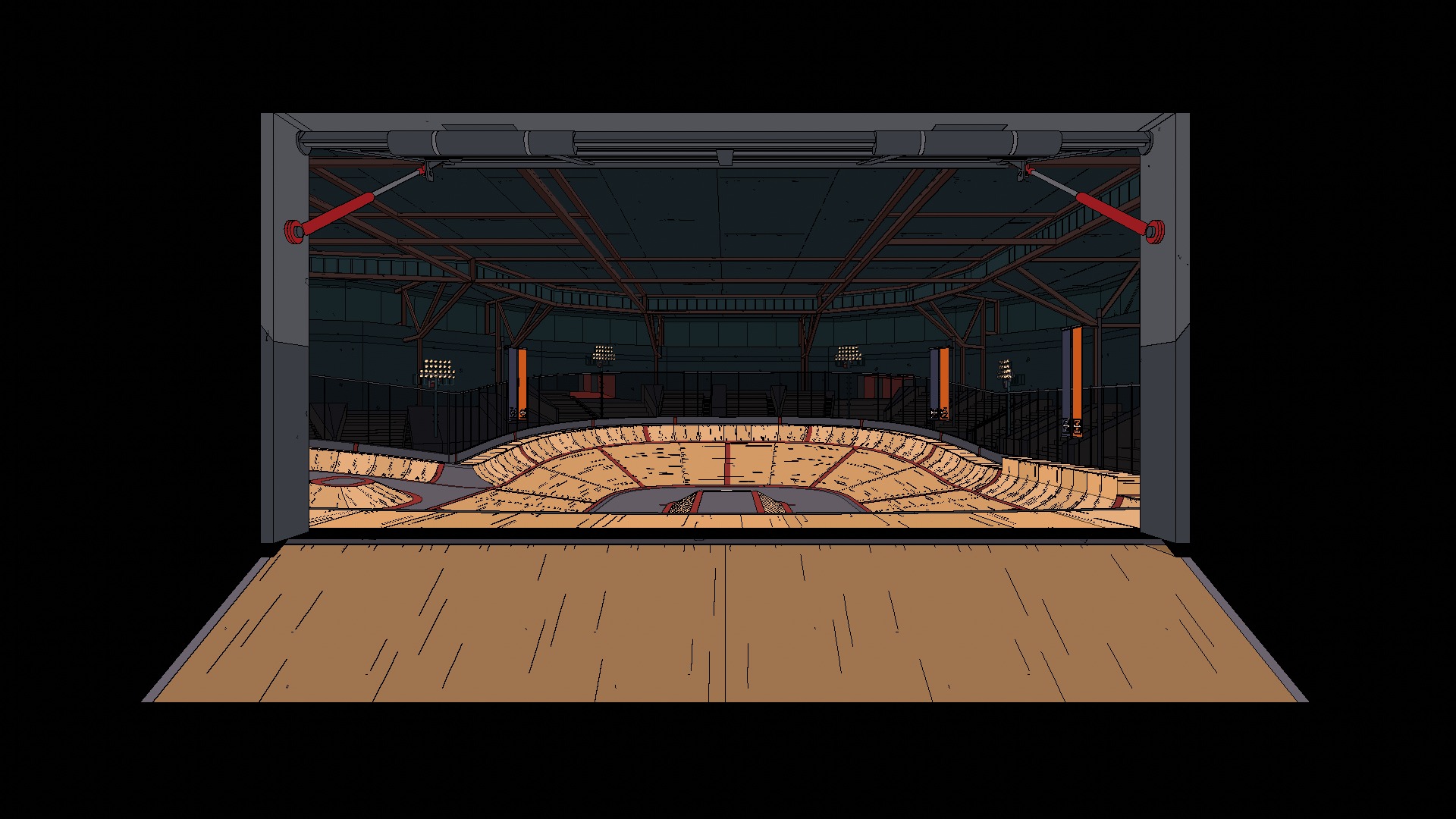
At first glance, you might not think that a title like this would have an actual story considering what the gameplay and presentation are like. But you’d actually only be half right about that. The game does not feature a story in the traditional sense, in that the main character does not talk, there are no elaborate cutscenes, and the vast majority of it is completely optional for the player to engage with. But there is a really interesting narrative here if you chose to interact with it, even if it doesn’t really deliver a satisfying conclusion.
When you first start the campaign, a brief intro quickly brings you up to speed on the premise of the game. The year is 2030, and the planet is now ruled over by corporations who control most major facets of life. People are basically treated like fodder, and in order to keep them docile and obedient, a brand new bloodsport known as Rollerdrome is transmitted all across the globe. In this competition, contestants are made to face off against house players in deadly matches where death is only seconds away at any moment.
For those readers who have had some exposure to older dystopian films from the 70s and 80s like Rollerball or The Running Man, you know exactly the kind of vibe the developers are going for here. And in this bleak world, you step into the shoes of one Kara Hassan, a rookie that has joined the championship in order to accomplish her own personal goals that reveal themselves as you make your way through the campaign. So this is all the basic premise that’s established before you ever compete in a single event.
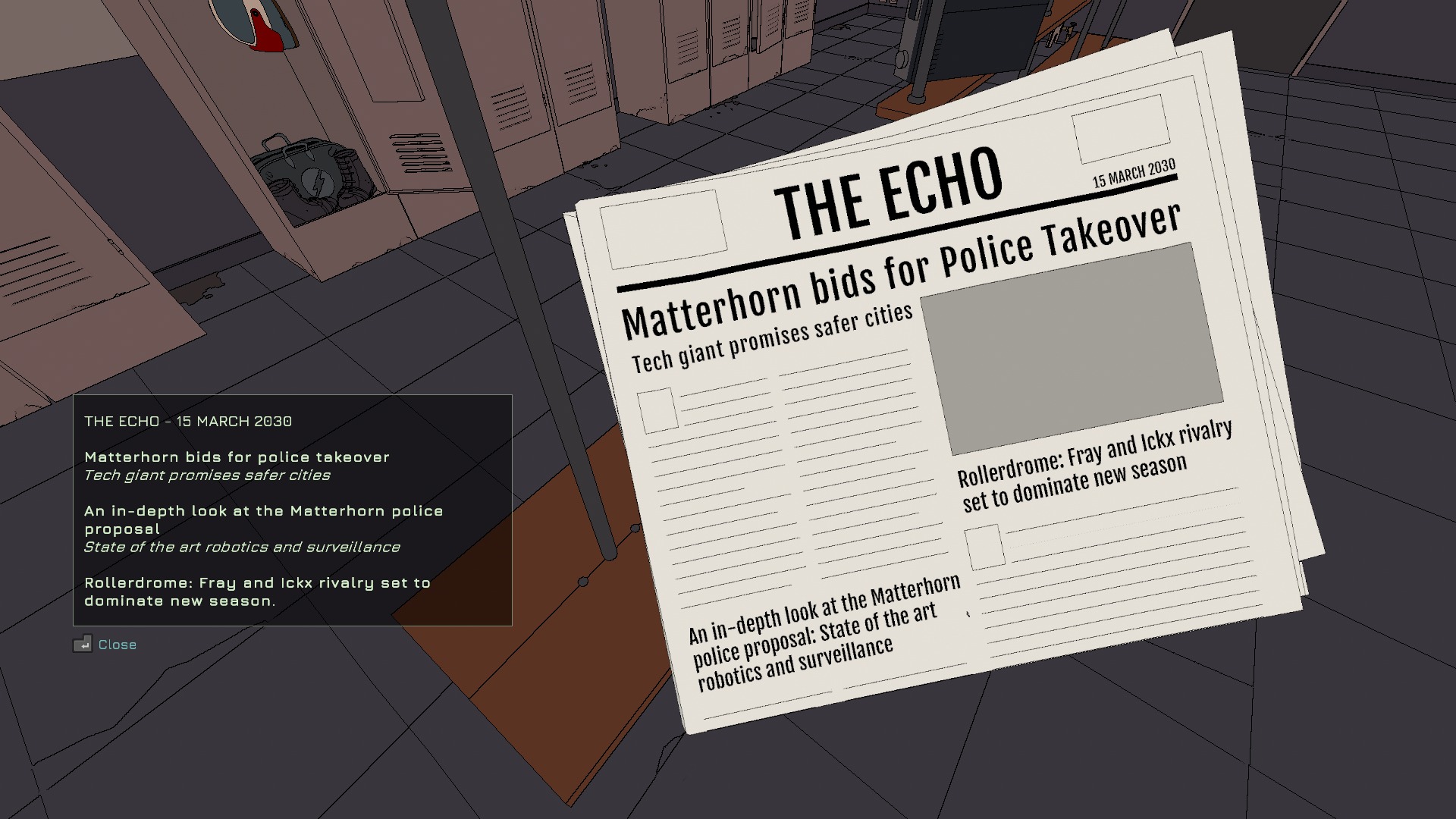
The matches are clearly the main draw, but even outside of them there are moments in the game where you’re simply allowed to exist in a physical space in first-person mode and explore certain locations. You learn about other competitors in the Rollerdrome, the state of the world, and even Kara’s reputation within the championship. But what I personally loved about this story, is that all of this information is conveyed through notes, newspapers, etc. in the environment. The game rewards you with worldbuilding for taking the time to interact with it.
For example, some of the most interesting tidbits you pick up right before the first actual match involve the Matterhorn corporation. They are the organizers of the Rollerdrome tournament and the main antagonists of the game. A newspaper found in your locker room tells you that the company has been putting in bids to take on the role of the country’s police force and essentially transform it into a surveillance state. A bit more exploring, and you can also find recruitment flyers for the New Action Army, a volunteer force standing in opposition to the corporate grip on their lives.
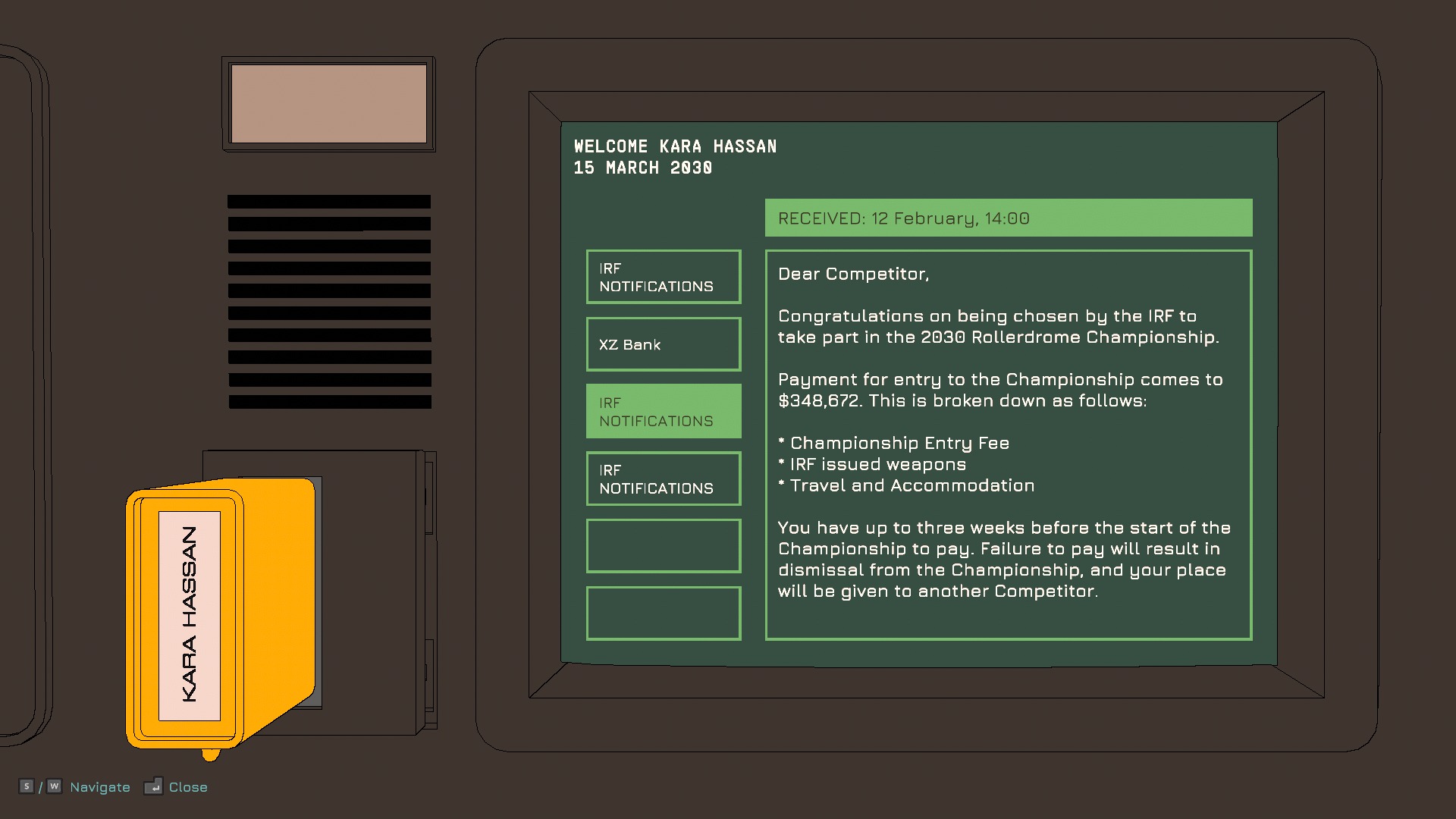
A tiny little detail that I found really fascinating took the form of two emails addressed to Kara on a computer terminal also found in the locker room. In one of these, she learns from the International Rollerdrome Federation that she has been chosen to take part in the championship, but she has to pay $348,672 to them in order to be allowed to actually compete. And the other email then mentions that she has taken out $342,240 in loans from XZ Bank in order to pay these fees.
So while looking at these your mind immediately connects the dots, and you realize that Kara has around $6,432 to her name already. And she probably didn’t want to take out a full loan of $348,672, so that she could be indebted to the bank for as little money as possible. This is a pretty relatable thing, and it made me sympathize with our protagonist immediately. It also told me that she clearly has a reason she desperately wants to compete in the Rollerdrome, but we’ll leave that to the players to find out for themselves.
Gameplay
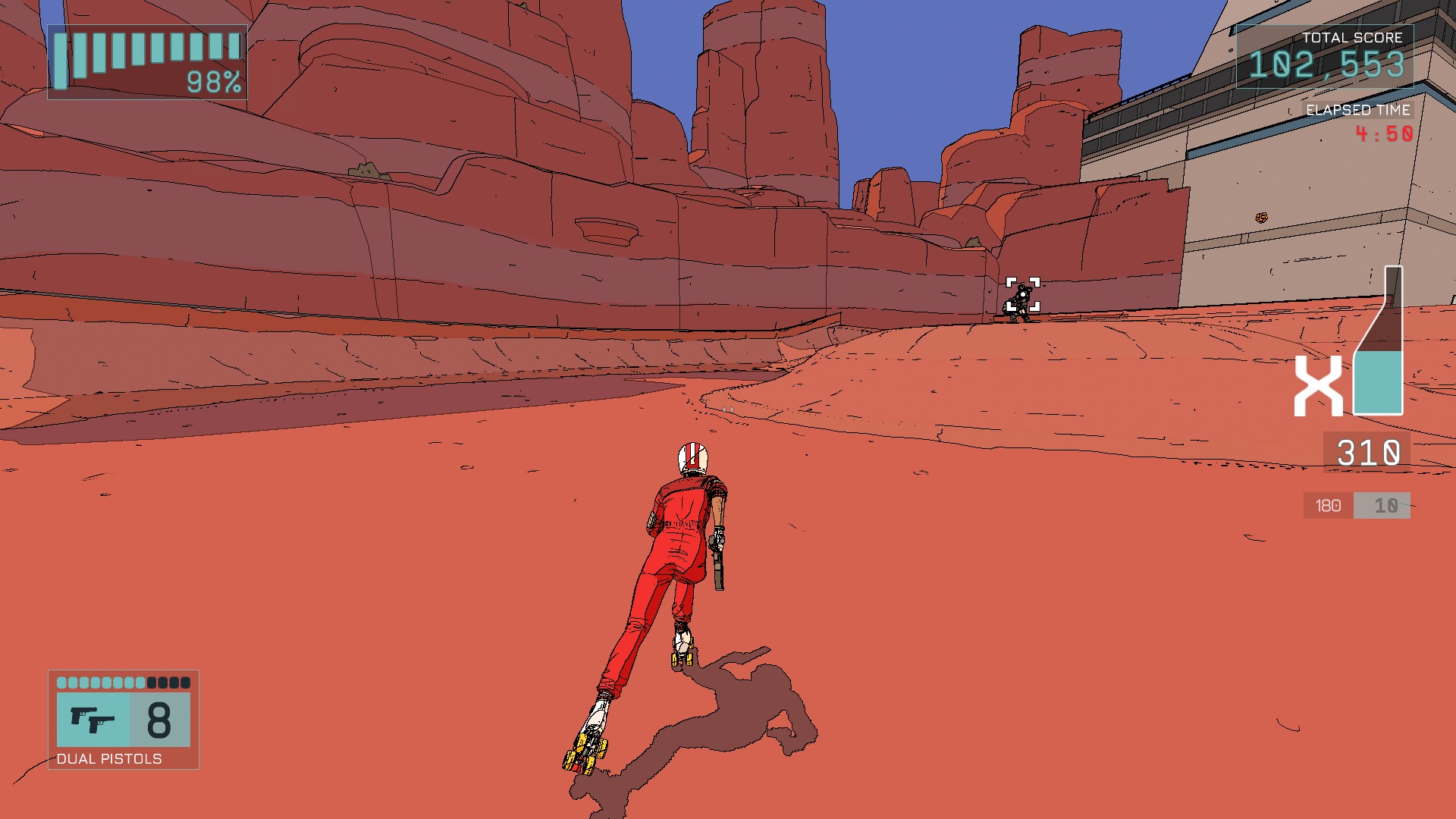
Matches in Rollerdrome follows the same basic premise. You are set loose in a series of different arenas, each designed in the vein of skateparks with all of the relevant architecture and obstacles. There are rails, ramps, breakable windows, elevated platforms, and basically anything that would feel at home in a Tony Hawk game. Your job then is to use these arenas to your advantage and pull off sick tricks while taking out the wave after wave of enemies that are thrown at you. But it’s not so simple either.
Your start the campaign off with a simple pair of dual pistols that are capable of dealing low sustained damage over a short period of time as you hold down the shoot button. They are able to deal with regular enemies easily, but some of the more specialized foes are a bit hard to take down with them. Over time, you gain access to a shotgun that does a great deal of damage if you manage to execute the perfect shot, as well as a grenade launcher that deals area of effect damage, and even a long-range railgun that can take our targets at a distance.
Your arsenal is limited to these four tools, and the catch here is that they all have their own limited firing capacity but share the exact same ammo pool. And you will regularly run out of bullets, often during the course of taking out a single enemy. So how exactly do you get more ammo in Rollerdrome? Well, by doing tricks in the heat of combat. The more complex the stunts you pull off, the quicker you can replenish your magazines and the faster you can get back to killing.
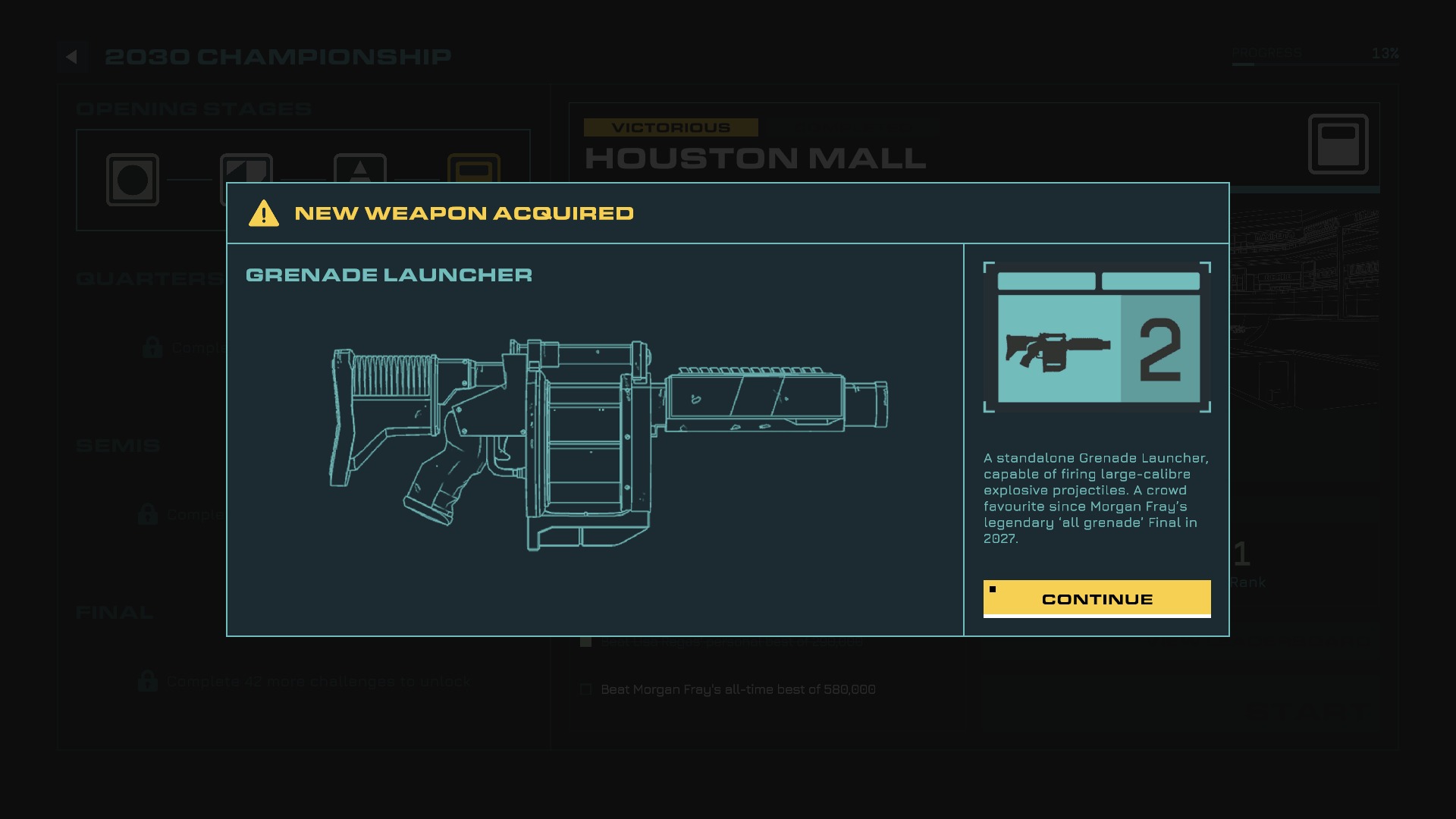
The trick system is not nearly as complex as something you might find in a dedicated skating game, but it gets the job done. You can jump, do flips, spins, grabs, wall rides, and even grind rails with different buttons on the controller. If you press a directional button while pulling these off, then you can even perform slight variations on the tricks themselves.
And again, they serve the basic purpose of allowing you to regain ammunition, which is great, and you look really cool while pulling them off. You even have access to a simple dodge that can give you a brief moment of invulnerability from enemy attacks. And if you time it exactly right when a sniper is aiming down at you, you can pull off a perfect dodge which also replenishes ammo without having to do complex maneuvers.
The problem however is that this limited selection of tricks starts to get repetitive after a short while, and you discover that the game doesn’t really penalize you for repeating them over and over again. So if you don’t feel like pulling off complex stunts, all you have to do is pick a favorite and repeat it over and over again to keep yourself topped up. It’s a simple complaint, but I feel like it’s worth mentioning for any potential buyers that might confuse Rollerdrome for a more complex sports title.
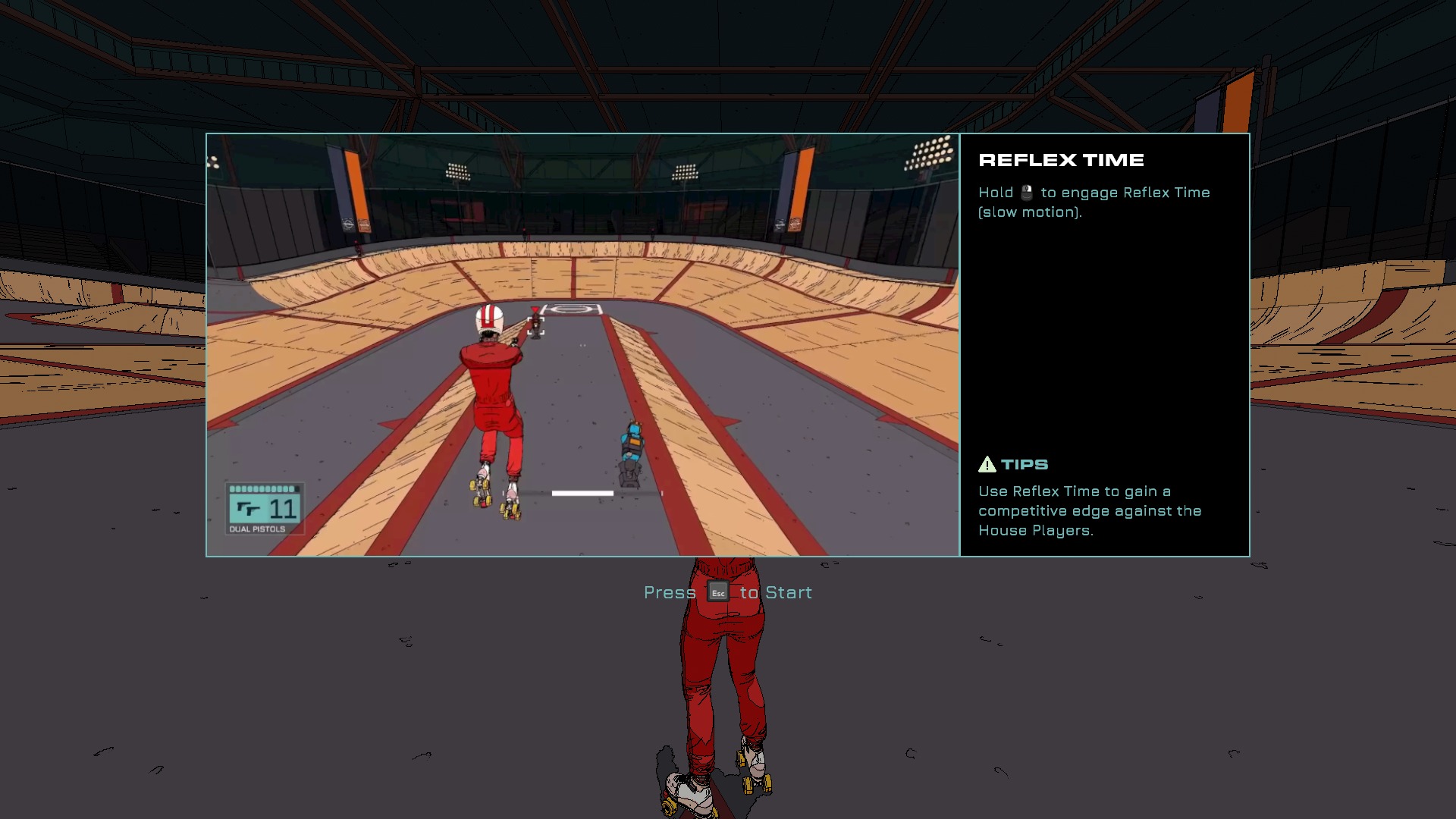
Players also have access to a slow-motion focus mode called ‘Reflex Time,’ which can be used to gain a competitive advantage against some of the more tricky enemies the game throws at you. For example, snipers are usually perched up on platforms not reachable by the player, and certain enemies known as Warheads shield up as soon as you damage them. For both of these cases, Reflex Time gives you the exact edge you require to take them down quickly and efficiently.
And you do have to kill quickly, especially if you’re not all that great at avoiding damage. Because health can only be gained by killing the regular grunts you’ll find on each map. And so it’s imperative that you are able to quickly perform combos for ammo, because that in itself is also a currency through which you can gain health. It’s all designed to keep you moving faster and faster through the arenas.
And when all of these mechanics come together into a cohesive whole, the whole experience really really works. The tricks may be repetitive, and the weapon choices might be limited, but none of that really matters in the end. Because even if they are valid complaints you can level against the title, what you have to know about Rollerdrome is that it operates primarily on vibes and style.
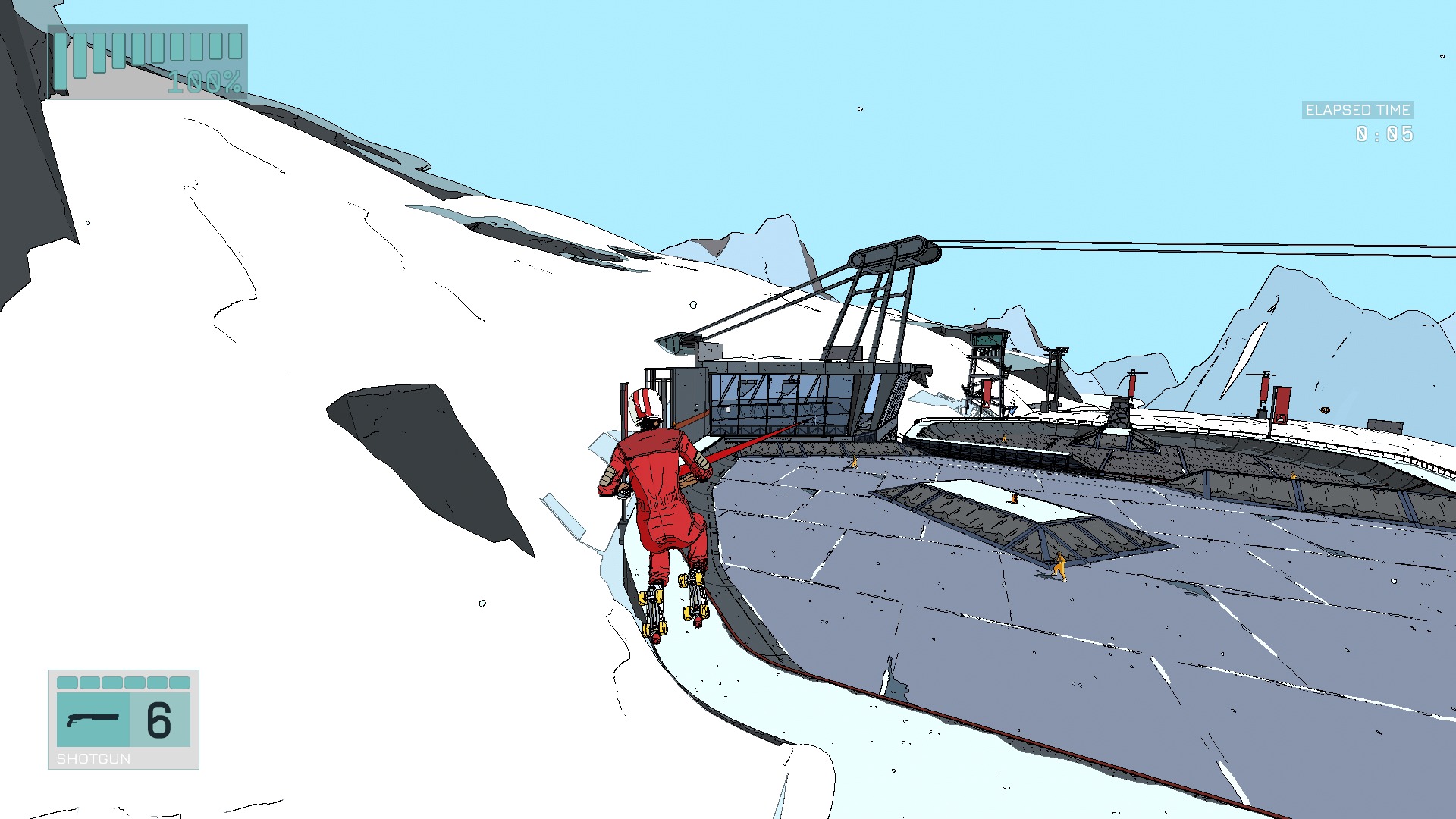
After you get used to the movement and learn to master the basics of combat, the game will eventually click with you at some point. There are moments during matches where the music is pumping, the bullets are flying, you’re cranking out dozens of tricks a minute, and everything is simply perfect. In those moments, Rollerdrome almost feels transcendental. Being able to clear out entire levels with little to no downtime is one of the best gaming experiences I’ve had this year.
And to motivate you to go all out, each arena also throws a bunch of objectives at you to accomplish as well. From simple objectives like killing specific enemy types with a particular weapon or even performing certain tricks while performing a kill, there are a lot of these for the players to go through. And the point of them is to experiment, switch up your techniques and keep moving forward. There are even Combo and Trick tokens littered around the environment, that increase your score multiplier and make you try out moves you might otherwise ignore.
Because while simply getting through each match is definitely acceptable, the main point is to go through each level with as much speed and style as possible in order to unlock further tiers of matches. Simply pulling off tricks gets you next to nothing. You have to kill enemies stylishly and in quick succession in order to get your score multiplier up as much as possible. The end goal is to make your way up the leaderboards, and at least beat the scores set by other in-game Rollerdrome players.
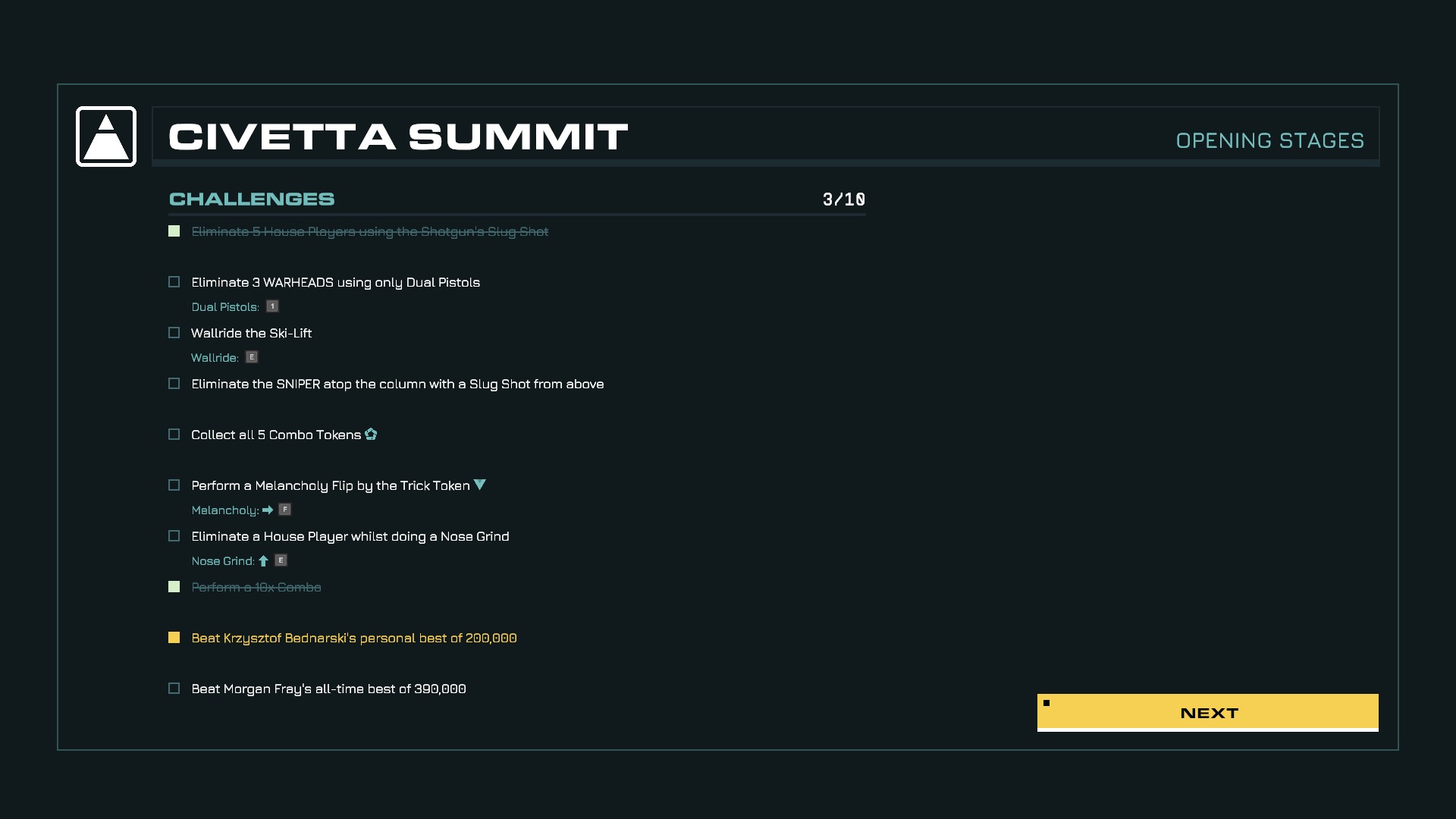
The game also ramps up in difficulty really quickly. The first handful of levels ease you into the whole experience, but by the time the first arc wraps, it starts throwing multiple different types of enemies at you in rapid succession. They also come at you in greater numbers, to the point that the screen is often full of laser sights, mines, homing rockets, and even mechs. It’s all really hectic, and you have to be at the top of your game to stay alive.
Visuals And Performance
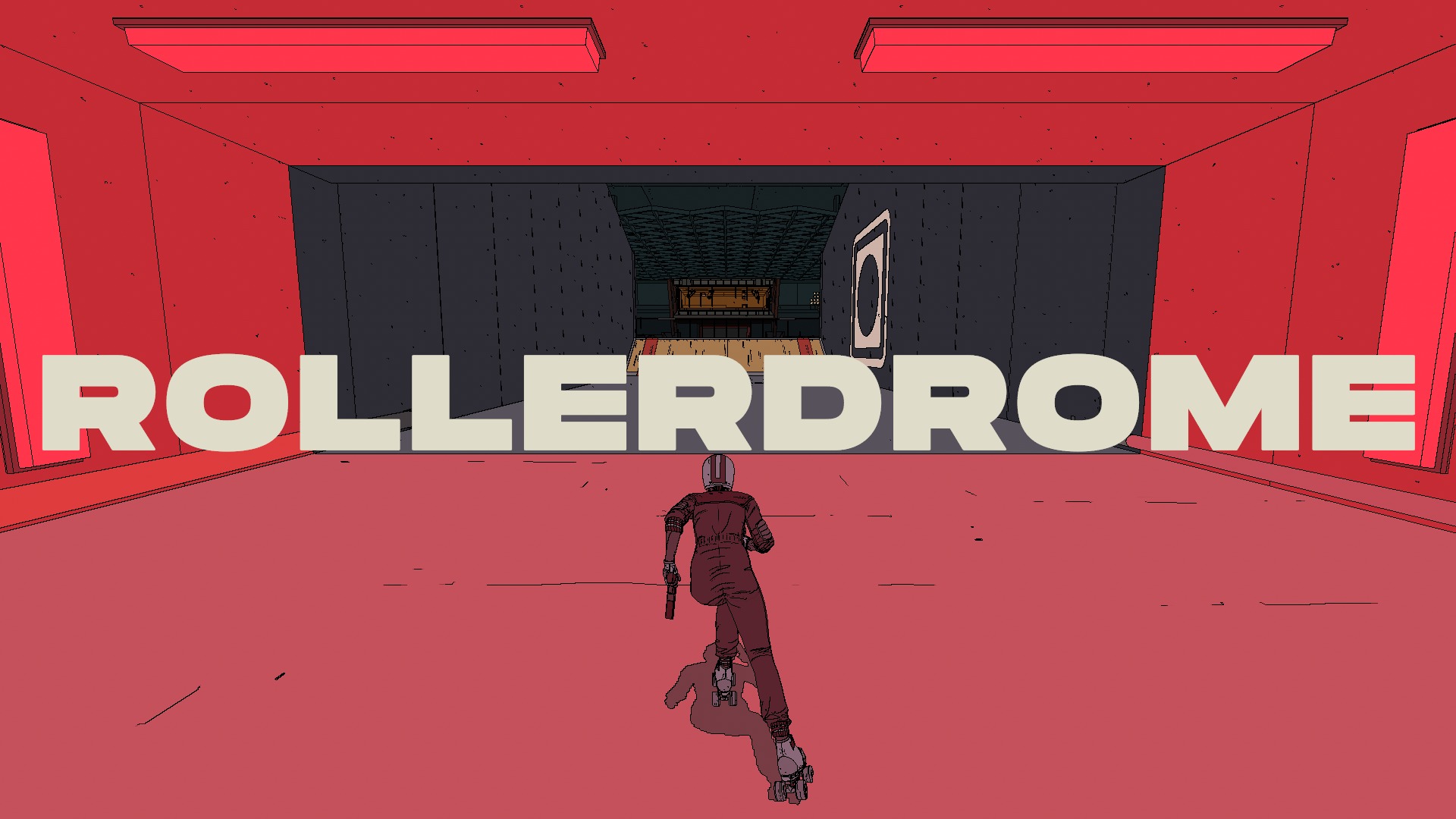
Rollerdrome is not a particularly intensive game, and yet it still looks beautiful. It utilizes a kind of cel-shaded art style that we have seen before in other gorgeous games like Sable, and it simply makes excellent use of it to give the world a more vibrant and colorful feel.
The entire game seems to have an almost tough and gritty feel to it when you stop for a moment and take a good hard look at it. But in motion, it looks fantastic. It looks like a comic book panel or a painting that has come alive and is moving faster than you can keep up with it. Honestly speaking, I don’t know how to describe it in all that detail. You can see what this game looks like, and you know that it’s stunning.
In terms of performance, you should technically be able to run the game on any GPU that was released within the past five years or so, maybe even older. As I mentioned above, Rollerdrome is not an intensive game, and I was able to run it with an AMD RX 580 (4GB) at 1080p with a consistently stable 60 FPS, even when there was a lot of stuff happening on screen.
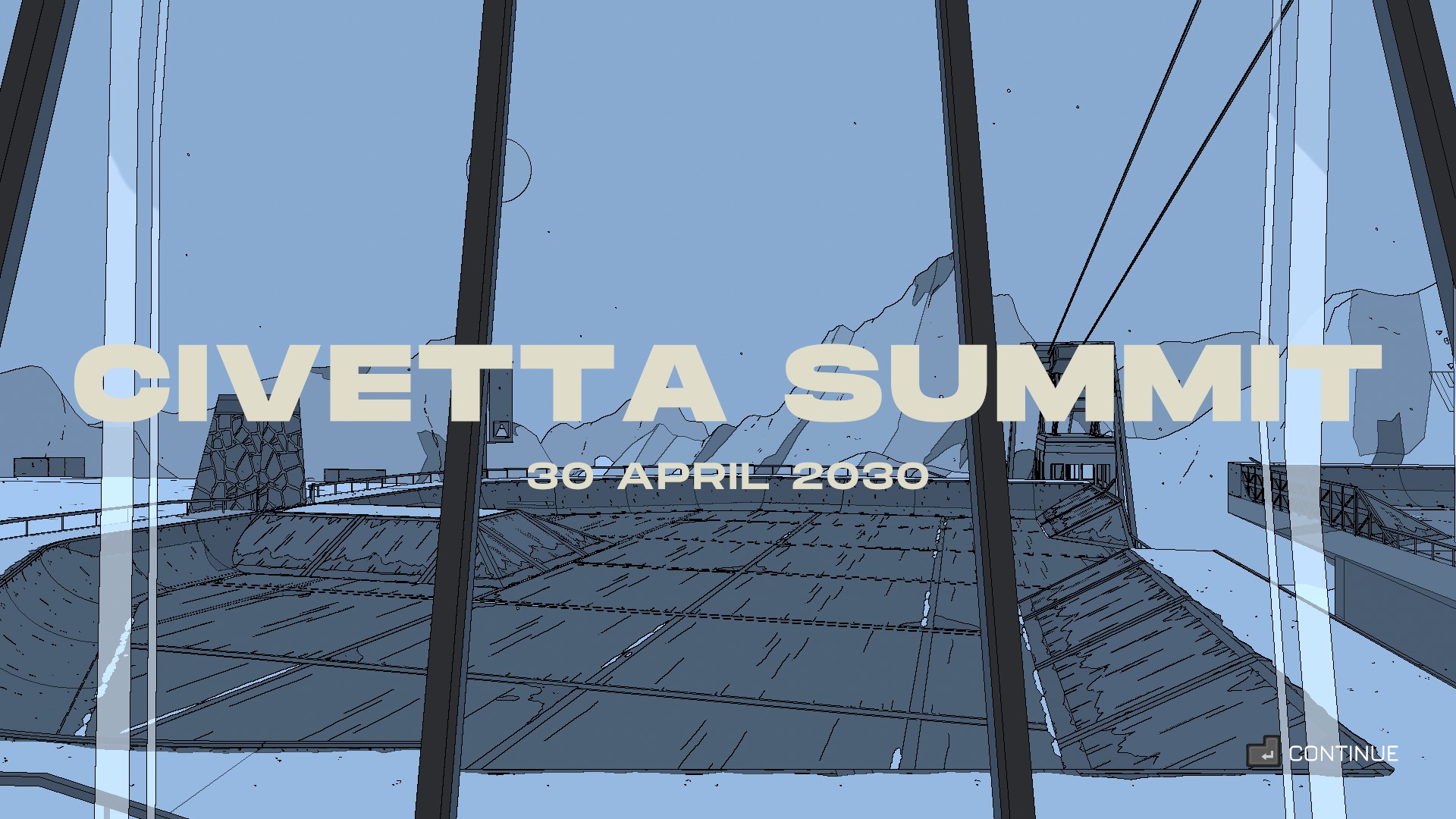
I also tried out the game on a GTX 1060 6GB with a 1440p monitor, and I was still able to maintain the resolution with a solid 60 FPS. I honestly don’t even know why I bothered to test performance on two different machines, Rollerdrome could probably run on a smart fridge without much effort.
Rollerdrome Verdict
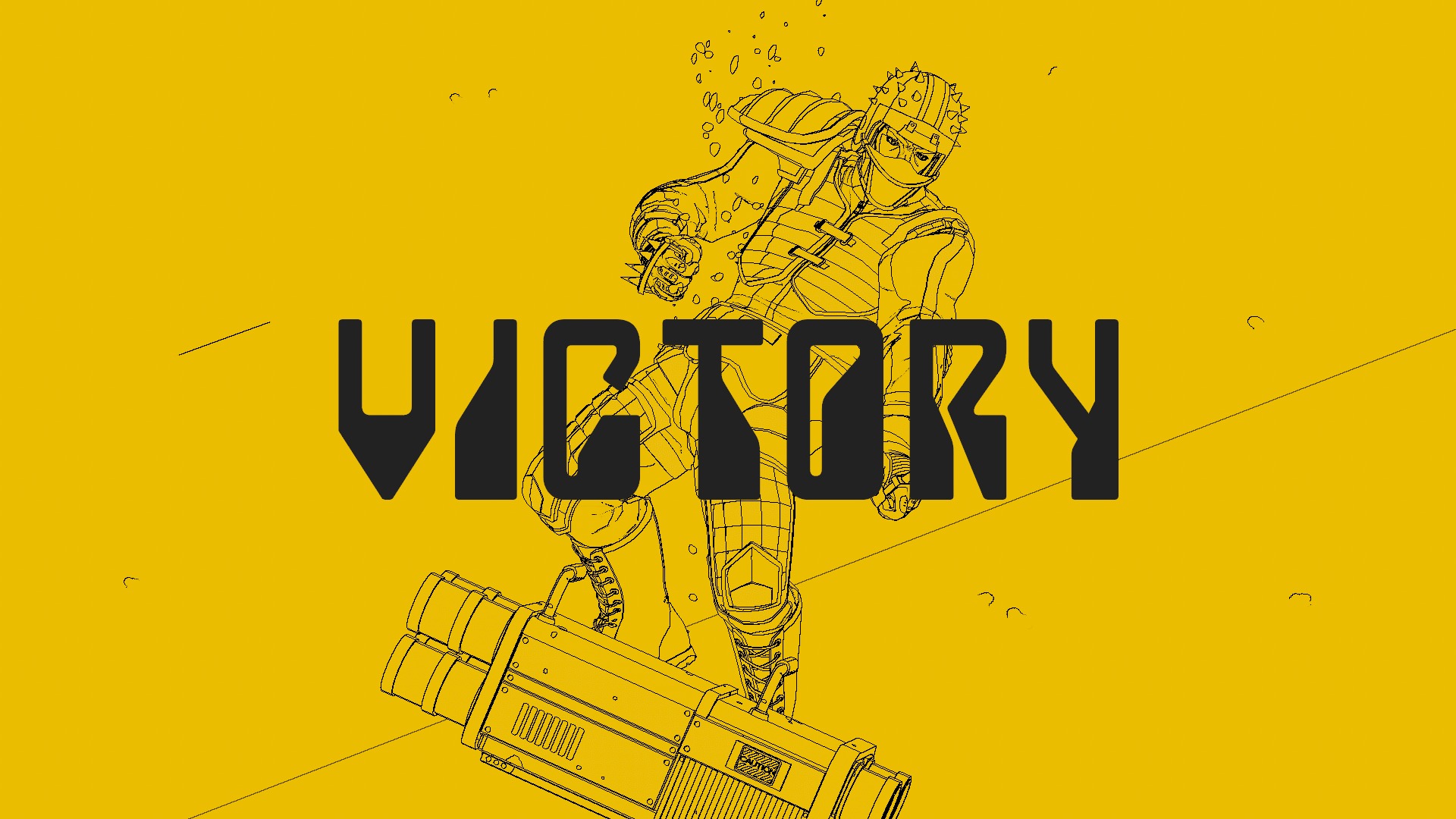
While both the gunplay and the tricks might be a bit simplistic, Rollerdrome nonetheless combines them into a fantastic mix of action gameplay that can honestly be hard to pull away from. It can even be addicting at times, especially when you’re having a good run and the sense of movement and music just click together. If this style of gameplay appeals to you, as it does to me, then you will have a great time.
But I also won’t lie to you, the whole thing can get a bit repetitive pretty quickly. The combat isn’t particularly deep, and most of the variations come from the level design, challenges, and enemy types. But even those will get old after a point. The Lack of punishment for repeating tricks also doesn’t help this feeling at all.
I really liked the background story, and I enjoyed learning more about the world and Kara Hassan’s motivations for taking part in this brutal championship from the notes and letters scattered around in the moments between matches. But I do wish that there had been a more definite end point to the narrative.
The cel-shaded art style is also great, and it makes every trick, and every explosion seem like something straight out of a comic book. It’s honestly one of the biggest appeals of the game.
The Good
- Beautiful Art Style.
- Fantastic Soundtrack.
- Great Worldbuilding.
- Solid Gameplay Foundation.
- Can Run On Most Modern Machines.
The Bad
- Combat Gets Repetitive.
- Simplistic Trick System.
Rollerdrome Rating – 4/5
We hope that you enjoyed our Rollerdrome Review. While you’re here, why not also check out some of our other reviews?
- Way Of The Hunter Review
- Spider-Man Remastered PC Review
- Lost In Play Review
- Two Point Campus Review
Thanks! Do share your feedback with us. ⚡
How can we make this post better? Your help would be appreciated. ✍



